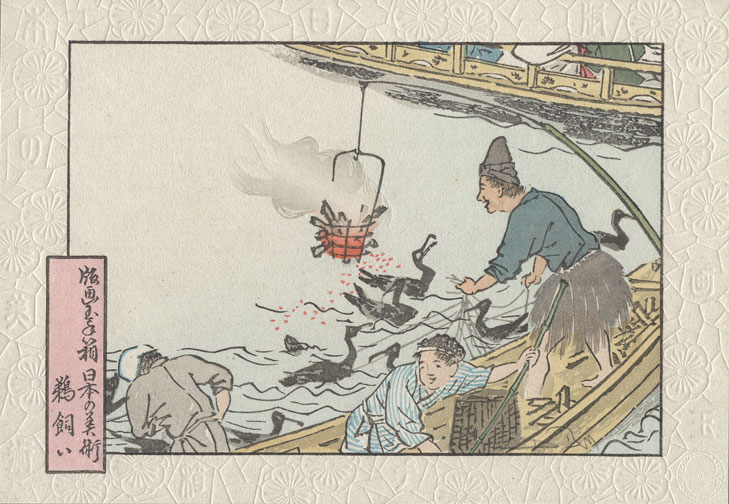

Cormorant Fishing
(click anywhere to close)
Cormorant Fishing
For our next print in the ‘Arts of Japan’ we take a look at a different sort of art. I suppose that there will be some among the viewers who don’t think that fishing counts in this category, but I am sure that fishermen among you will have no doubts at all!
Our artist for this design was the painter Kawai Gyokudo, and this image was published in Taisho 2, in a woodblock album entitled ‘Famous Places in Japan, a collection of scenes by well-known artists of the day. Taisho 2 was 1913, so it is making its appearance in my series at exactly one hundred years of age, a nice coincidence!
The famous place here is the Nagara River in Gifu Prefecture, and the reason for the fame is the local tradition of cormorant fishing, which apparently dates back at least 1300 years. The birds are used to catch fish, being allowed to swallow the smaller ones, but forced to bring the larger ones back to the waiting fisherman.
In modern times, whenever we think of this cormorant fishing, we of course think of it as nothing more than a tourist attraction, although I am sure that it was originally a legitimate method of obtaining food. I asked a number of people for their guess on when this transition might have taken place, and most answered ‘sometime in Showa,’ or ‘in the post-war period ...’ But look up at the top of this design - that is not another fishing boat, but is clearly a boatload of tourists floating along watching the action! So by Taisho 2 (and perhaps much earlier) this sort of activity had already made the transition from ‘daily sustenance’ to ‘entertainment’.
And here I am, trying to get woodblock printmaking to move the other way!
David
(Click to close)